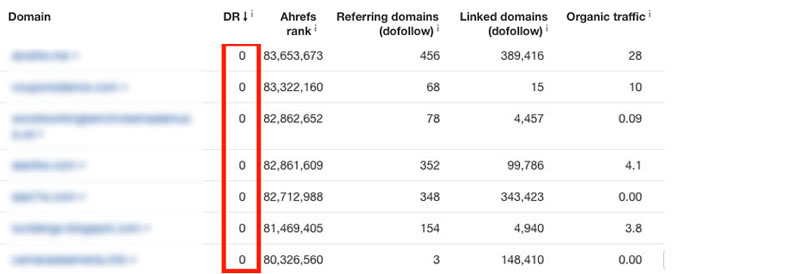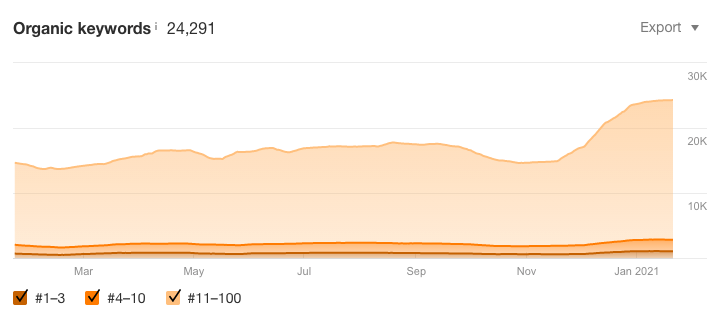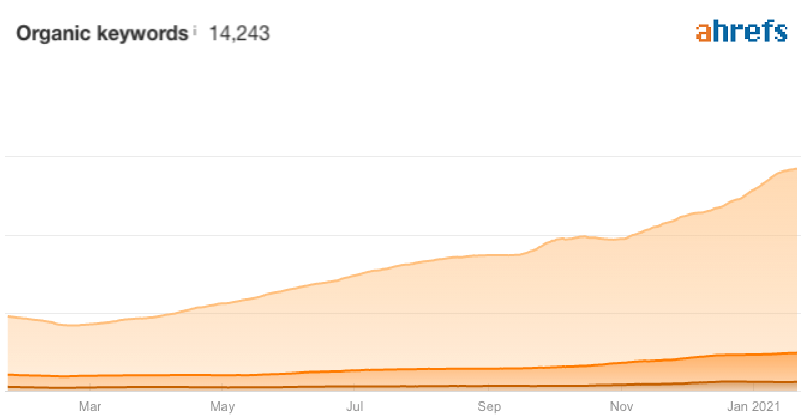SEO can help your Ecommerce business grow by boosting organic traffic. However, there are some common SEO mistakes that could cost your brand dearly.
5 Common Ecommerce SEO Mistakes and How To Fix Them
Even before the COVID-19 pandemic, the ecommerce industry had been growing, with the share of online sales slowly increasing each year. However, as people started spending more time in their homes due to a lockdown and fear of getting infected, the ecommerce sector experienced an unprecedented period of growth. In 2020, online sales accounted for 11% of all retail sales in the United States, and, given how convenient and time-saving shopping online is, this trend will continue in the following years.
One of the consequences of this development is the growing competition in the ecommerce industry. The share of customers who do their shopping online has increased, but the top online retailers have to fight tooth and nail to not be dethroned by younger companies. Though reaching top positions in the SERPS is not an easy task, it’s certainly a worthwhile endeavor, given that in 2022, online retail sales worldwide are expected to reach $6.54 trillion.
If you aim to reap the rewards of your website ranking well in SERPs, you should know how to maximize the effectiveness of your SEO strategy. That’s why we have decided to share our case studies that will teach you how to avoid 5 common ecommerce SEO mistakes.
If you’d like to find out how we can help you overcome your Ecommerce SEO issues. Please contact us today
1. Irrelevant and Low-Quality Backlinks
Ecommerce Niche: Sports Equipment Store
First, like with all our SEO campaigns we conducted a link profile audit to identify which links could be damaging our client’s ability to establish authority within their niche. The perfect backlink profile is made of relevant links that provide value to users and with anchors made up of branded, exact match, partial match, and generic terms.
It turned out that our client’s backlink profile was cluttered with low-quality contextually irrelevant URLs averaging a DR score of 5:

To stop these links from hurting our client’s website, over the course of 5 months, we updated disavow files in Google Search Console numerous times. We removed a large number of toxic links, with the following being the most common issues:
- Domains with a disproportionate number of links pointing to a single site. This is a form of a malicious attack from spammy sites that’s designed to result in a manual penalty from Google.
- Anchor texts with targeted terms
- Domains with no authority
- Low or non-existent traffic of the referring domains
Whilst cleaning up our client’s backlink profile, we researched relevant and authoritative sites within their industry and began building new links that were reflective of our client’s authority and expertise.
The Results
- Increased organic traffic from 21,825 users per month to 43,545
- Increased monthly revenue from £52,587 per month to £115,415



2. E-A-T: Untrustworthy Testimonials
Ecommerce Niche: Coffee Shop
Search engines measure authority by looking for signals that demonstrate that a site belongs to a trustworthy business or expert within its niche. Within SEO, this is known as E-A-T (Expertise, Authority, and Trustworthiness), and for our client, we wanted to improve these key signals.
In order to improve their E-A-T, we focused on their testimonials. For user experience alone, a detailed testimonial with a full name & picture instils more confidence for visitors. However, it’s also worth knowing that Google loves user-generated keyword-rich content, which is why it can help you rank higher in the SERPs.
Taking those factors into consideration, we added clear headshots for each testimonial, first name, and surnames. We also added a rating schema to emphasise the quality of our client’s services in the eyes of both human visitors and Google’s crawlers.
By building on our client’s authority through testimonials as well as high-quality content pieces, we saw an increase in the number of new keywords and featured snippets.

The Results
- Increased organic traffic by 249.7% from 6,159 users to 21,538


- Increased ranking keywords from less than 500 to over 3000

- Increased new keyword entries onto the 1st page, and featured snippets

3. Poor Index Management
Ecommerce Niche: Home Improvement Store
Index management consists of removing pages that have no value to a user from Google’s index, which is a list of all possible pages it could return to a user in the SERPs.
That’s because, from a user’s perspective, you want to include only URLs that are top landing pages. Including all pages on your site within Google’s index is seen as ‘index bloating’.
In this case, we discovered that our client had thin content pages and tag pages included in the content. Whilst “tag” pages are useful for internally linking articles or products, as a landing page, unfortunately, they don’t provide a user any additional value. For this reason, we deindexed any ‘tag’ pages and, similarly, author, archives, and thin content pages.

We must also note that search engines have a limited crawl budget to assess the quality of a website. This is why it is important to establish the most valuable pages not to exceed the crawl budget, which would hurt the website’s SEO.
What are the top pages to no-index?
- Tag Pages
- Thin Content Pages
- Author Pages
- Archives Pages
- Filters
- Faceted navigation
The Results
- Increased month to month organic traffic by 9.13%
- Increased month to month revenue by 19.87%


- Increased ranking keywords from less than 5k to almost 15k during entire campaign

4. Cluttered Silos
Ecommerce Niche: Cooking Equipment Store
After conducting an on-site audit, we found that one of our clients on Shopify had multiple products placed under different categories which resulted in numerous URL variations of the same product. This meant that products were further down on the page level. Ideally, all products should be easily accessible from the site’s navigation bar, as it shows Google which pages are the most important.
We rectified this issue by firstly making sure all internal links were clear. Our client’s content silos previously looked like this:
/collection/collection-name/product/product-name
That’s less than perfect, which is why we consolidated all similar URLs to make sure the links would show up as:
/products/product-name
We also added breadcrumb navigation on each page to allow visitors to track where they were and easily revisit main category pages.
On top of that, we introduced filters to all category pages. Why? To maximise the number of products shown on one page, ensure our client’s website closely resembles a functioning ecommerce site, and streamline the navigation on the site.
Thanks to these changes, we were able to minimise the number of product pages and direct all attention to a single URL variant of each product. With concise navigation, we strengthened our client’s internal linking structure, making it easier for all pages on the site to benefit from our link building strategy and therefore increase relevancy signals to Google for our client’s most valuable product pages.
The Results
- Increased organic traffic by 252.24%

- Increased the number of ranking keywords to over 10k

5. Generic Blog Posts
Ecommerce Niche: Chocolate Shop
Prior to joining us, our client had numerous blog posts that discussed general topics related to their products. Sadly, they didn’t target the right type of keywords that would support their money-making ecommerce pages.
We conducted a content gap analysis to identify opportunities to create new niche-specific posts that linked directly to user queries. After preparing a content plan and identifying keyword clusters to target for the quarter, we produced fresh articles with high SEO value on a monthly basis. Our main areas of focus were maximising the use of primary and secondary keywords in each blog post as well as directing internal links to product pages.
As our client belongs to a confectionary niche, we improved the internal linking by writing up recipes and including links to the individual products pages within the ingredients list. These links used relevant anchor texts that were a mix of exact and partial match keywords. On top of that, using recipe structured data also helped us with featured snippet rankability.
The Results
- Increased YOY organic traffic for Christmas period by 51.83%
- Increased YOY revenue by 72.31%


- Doubled the number of ranking keywords during entire campaign period

Conclusion
Though the share of customers doing shopping online has never been higher than in 2021, no matter the niche of your ecommerce business, you are bound to face fierce competition. Everyone wants a piece of the pie and reaching one of the top spots for the most popular queries that are relevant to your business is equal to hitting the jackpot.
We hope that by sharing our case studies, we’ll help you avoid some of the common, though as you can see – consequential SEO mistakes. If you have any questions or need help from SEO professionals, don’t hesitate to contact us.
More articles
View more of our research.

Constructing An eCommerce Website for SEO
Find out how to construct an eCommerce website that is great for users and accessible for search engines.

Educating Clients on the Value of SEO: A Guide for Marketing Managers
Find out how marketing professionals can transform their clients' perception of SEO by educating them about the value that it can bring to their businesses.
